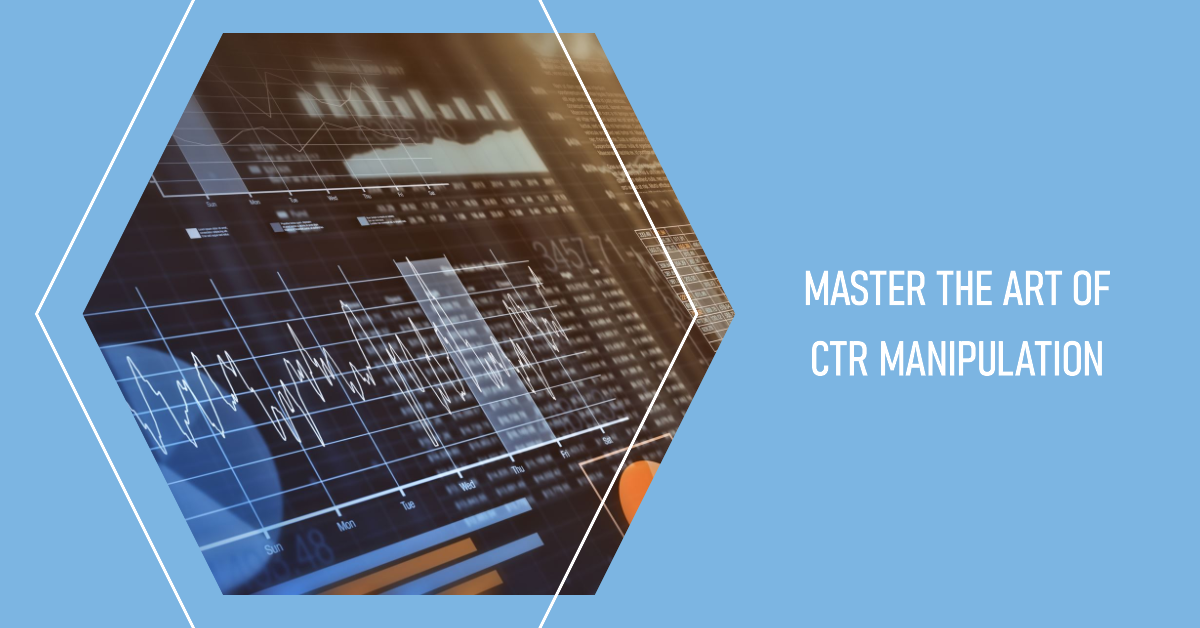GMB CTR Manipulation: Boost Your Google My Business Rankings
GMB CTR Manipulation: Boost Your Google My Business Rankings
Blog Article
Exploring the Connection Between CTR Adjustment Solutions and Customer Behavior
In the realm of electronic advertising, the influence of click-through rate (CTR) control solutions on individual actions stays a complicated and intriguing topic. By studying the intricate connection between CTR adjustment services and customer behavior, intriguing understandings arise that might reshape our understanding of electronic advertising and marketing approaches and their impacts on consumers.
Impact of CTR Manipulation on Behavior
Assessing the impact of Click-Through Rate (CTR) control on user actions discloses essential insights right into the characteristics of online engagement. CTR adjustment involves synthetically inflating the variety of clicks on a certain link or advertisement to deceive customers and search engines. This method can result in an altered understanding of a page's popularity or importance, ultimately affecting customer actions.

Furthermore, CTR manipulation can alter the information used by formulas to personalize customer experiences. This can lead to users being served material that does not line up with their preferences or interests, eventually bring about a decline in individual contentment and engagement. Comprehending the effect of CTR adjustment on user behavior is necessary for keeping transparency and count on in on-line interactions.
User Interaction With Controlled CTR
Customer involvement with controlled CTR information often results in skewed understandings of on the internet material appeal and importance. When users communicate with material based on synthetically inflated Click-Through Fees (CTR), they might think that particular details, items, or solutions are a lot more popular or trustworthy than they actually are. This can result in users making decisions based upon deceptive data, resulting in potentially unfavorable outcomes.
Engagement metrics like sort, shares, comments, and time spent on a website are typically influenced by CTR manipulation. Users might be more likely to involve with material that appears to have higher involvement prices, further perpetuating the cycle of manipulated understandings. Consequently, content creators and marketers may focus on generating material that generates high CTR instead of concentrating on creating really important and relevant product.

Mental Effects of CTR Adjustment

Additionally, the psychological results of CTR adjustment can likewise manifest in transformed decision-making procedures. Customers might be much more likely to click on content only based on its perceived popularity, instead of its actual worth or significance to their needs. This behavior change can lead to a shallow interaction with on-line web content, where customers may ignore high-grade however less popular offerings in favor of those with artificially improved CTRs.
In significance, the emotional ramifications of CTR control highlight the value of keeping openness and authenticity in on-line communications to foster authentic individual interaction and depend on.
Honest Factors To Consider in CTR Control
CTR control increases worries regarding deceiving individuals, misshaping data analytics, and compromising the trustworthiness of on the internet material. By synthetically inflating CTR, individuals may be misled into clicking on links or ads they would certainly not have chosen otherwise, leading to a disingenuous online experience.
Another moral element to consider is the fairness of adjusting CTR to gain an unfair benefit over rivals. Taking part in such practices not just breaches principles of fair game yet additionally weakens the trust right here that customers put in online systems. It is essential for services and electronic marketing professionals to maintain ethical standards in their methods to ensure openness, trustworthiness, and long-term sustainability in the on-line environment.
Effects for Digital Advertising
With the boosting dependence on electronic platforms for advertising and marketing functions, the technique of controling click-through prices (CTR) positions substantial ramifications for the performance and integrity of electronic marketing approaches. CTR control can cause skewed information analytics, deceiving marketing experts into thinking that their projects are carrying out far better than they in fact are. This can result in misallocation of sources, with firms purchasing underperforming techniques based upon falsified CTRs. Furthermore, when individuals understand that CTRs have been controlled, it can wear down rely on the brand, causing lasting negative repercussions for client commitment and brand credibility.
In addition, the usage of CTR control services can produce an unjust competitive landscape, where companies that take part in such practices obtain an artificial benefit over those that follow ethical marketing standards. This can suppress innovation and imagination in electronic advertising and marketing, as success comes to be more about manipulation strategies than delivering authentic value to customers. Eventually, the implications of CTR adjustment for digital marketing extend past temporary gains, influencing the general sustainability and integrity of advertising efforts in the electronic realm.
Conclusion
To conclude, the partnership linked here in between CTR control services and customer behavior is intricate and multifaceted. The impact of CTR adjustment on behavior, customer interaction with adjusted CTR, mental results, honest factors to consider, and ramifications for electronic marketing all contribute fit this relationship. Recognizing these dynamics is essential for marketers and scientists alike in order to navigate the ethical ramifications and take full advantage of the performance of their digital advertising and marketing techniques.
Report this page